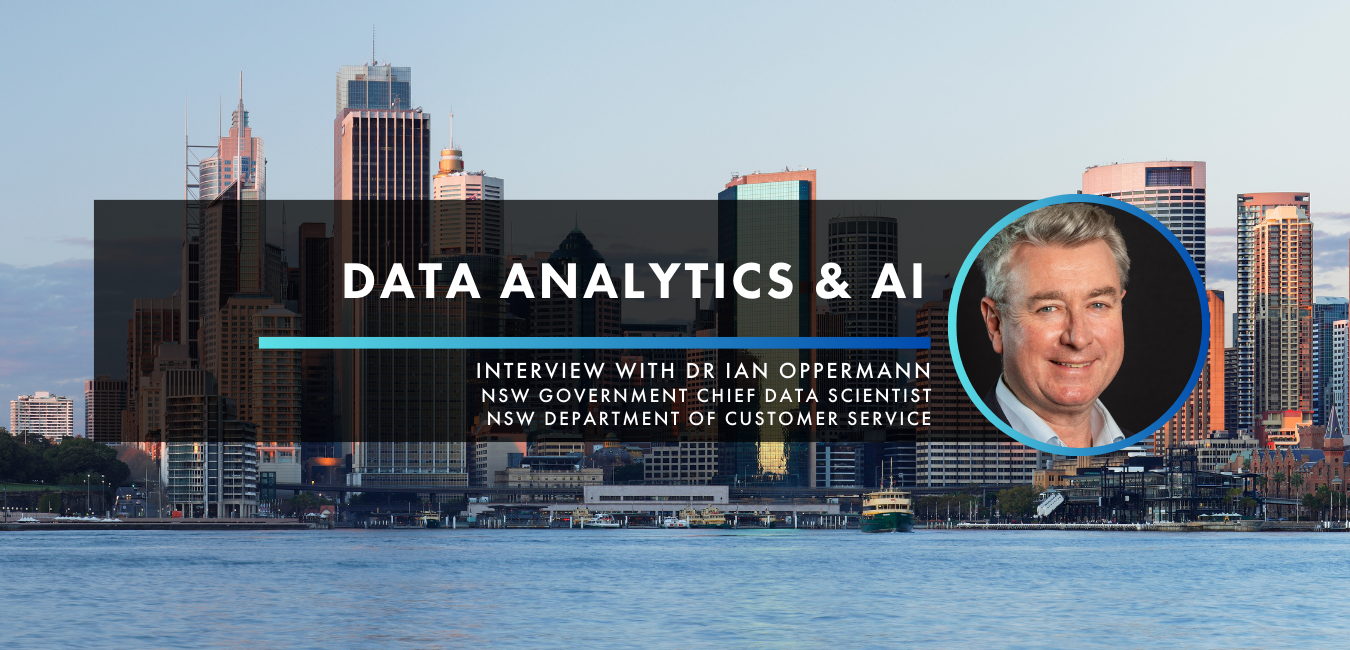FuturePlace Interview Spotlight, Dr Ian Oppermann.
We have the privilege to speak with Dr Ian Oppermann, NSW Government Chief Data Scientist. Ian discusses the challenges and evolution of data analytics and AI playing a crucial role in improving the efficiency of smart cities and places, enabling outcome-oriented planning and the opportunities emerging technologies present.
FuturePlace: What have been the most challenging aspects in your career in terms of how data and analytics have evolved?
Dr Ian Oppermann: Data analytics has come a long way in recent years. From being an area of curiosity, or a way of precision targeting advertisements for supermarkets or search engines, data analytics has become recognised as a very powerful toolkit allowing extreme personalisation at scale. When “data analytics” is replaced with “AI”, suddenly that personalisation at scale becomes supercharged.
The associated challenges come from the consequences of using those powerful (or supercharged) tools. Whenever powerful tools are used, there are consequences. Data analytics allows very precise scrutiny of systems, services, or policies. It supports the “Understand”, “Predict” and “What If Scenario” use cases. AI acts as an accelerant on these as well as creating the possibilities to directly impact the real world, “alerting”, “alarming”, “deciding” or “acting” increasingly moving to prompt action, or to take action, in the real world.
So to answer the question, the most challenging aspects of my career has moved from the frustrations of trying to convince people of the value of data (the national response to COVID helped here), or that data analytics and AI can be valuable (the explosion of Generative AI tools has helped there), to now understanding how to prevent, limit, or remediate the challenges associated with that amplification of potential harms when data and AI are used to replace or augment existing systems.
FP: How do you think AI could become a threat or friend to the commercial real estate industry?
Ian: AI has actually been with us since the 1950’s but it has always been a bit underwhelming. The rush of recent large language models and generative AI tools which seemly exploded onto the scene have shown just how good, and how “general”, AI can get.
By now, everyone has probably had a play with one of these AI tools and initially, it seemed like magic. You can ask for poems, speeches or songs “in the style of..”, or art “in the style of..”. There is enough information out there to train these models so that they can actually do a fair job of generating a folks song in the style of Cat Stevens (purely as an example!). After a while, however, you do start to see some serious limitations, even some “hallucinations” from these tools.
It is hard to imagine using any tool that “hallucinates” for serious purposes. Imagine if your ruler, pen, or calculator hallucinated? Nonetheless, you can use any tool if you acknowledge and understand its limitations, being clear just how far you can rely on it, and where we humans still need to be in the loop. By “being in the loop”, it means we are still using the tools, rather than blindly accepting an output.
So what for real estate? The new AI tools are excellent at finding “needles in haystacks”; finding unexpected connections and relationships, or looking for anomalies in large fields of information such as databases, reports and policies. This could help with identifying issues associated with a project or property, and identify the web of relationships for any project or property including beneficial ownership relationships. They are also very good at translation including potentially from structured natural language documents to formal rules, or from one set of formal rules to another. This is useful to translate documents such as plans or planning documents into a machine readable or interpretable format.
All of this can help increase automation of processing, reduce uncertainties and minimise errors. It can also create a more consistent, complete and discoverable history of any project or property.
FP: How has data analytics been used to improve the efficiency of smart cities/smart places?
Ian: Australian efforts in Smart Cities and Smart Places are still at a relatively early stage.
The response to COVID dramatically changed the willingness to move through increasingly sophisticated application of data and analytics: from situational awareness, to drill down / root cause analysis, to prediction and “what-if” scenario planning.
Ultimately data analytics helps us think in terms of “outcomes” such as community resilience, liveability; accessibility, and allows us to understand the journey of, or impact on, community, business, infrastructure projects and other elements of “place” as we strive to deliver on these outcomes.
As a parallel development, building information models (BIMs) are increasingly being used to help plan, approve, construct, build and maintain infrastructure. As more infrastructure is modelled in this way from an early stage, and then linked to other models and spatial data sets, a view emerges of detailed “digital twins” of physical places.
In NSW, the Smart Places team has funded projects which not only strive towards these real-world outcomes, but which also increasingly use data and analytics to understand and active “place”. As these projects mature and scale, the ability to measure and share environmental and systems data increasingly takes us to a rich digital representation of our communities. As these measured data enhance the “digital twins” of communities, the digital representations become more refined. As a result, we will see ever more value created from data and analytics used to explore, understand and model the life and use of cities and places. Stay tuned.
Data & Analytics in Real Estate Summit
Ian will be speaking at the 2nd annual Data & Analytics in Real Estate Summit, taking place on 31st August 2023 in Sydney. It will bring together industry professionals to share insights, best practices, and emerging trends in the use of these technologies. It will cover a range of topics, and feature case studies, panels and roundtables featuring leading advocates and users.







